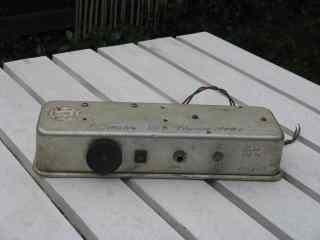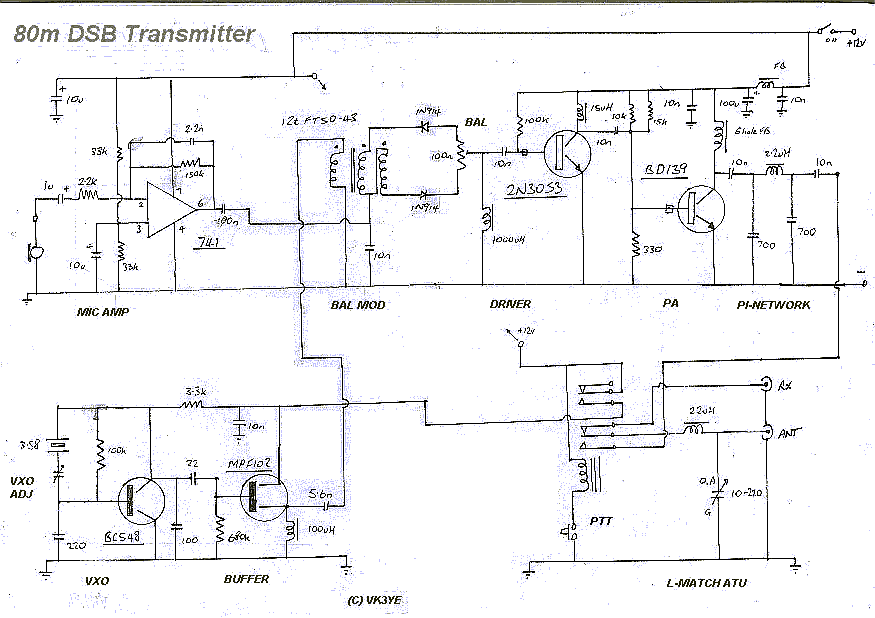

Return to VK3YE amateur radio projects
|
80 Metre DSB Transmitter
 This circuit is probably the simplest practical 'bare-bones' voice transmitter for the 3.5 MHz amateur band.
Unlike other simple transmitters, this one transmits DSB rather than AM. This makes it more compatible with SSB. Indeed, many SSB operators would not know that they're listening to a DSB signal if the signal is reasonably clean.
Another feature this rig boasts is frequency agility. As mentioned elsewhere here, this is almost a must for any QRP transmitter. The use of a 3.58 MHz ceramic resonator allows coverage over the most active part of the 80 metre voice segment in Australia.
The VXO tunes about 3.550 to 3.620 MHz. A 10 to 160pF transistor radio tuning capacitor is used to adjust the frequency. A buffer amplifier isolates the VXO from the balanced modulator. The speech amplifier is a standard 741 op-amp circuit, as used in many transmitters by VK3XU. The balanced modulator is another common circuit. Any ferrite toroid, including TV balun cores, should suffice for the broadband inductor. The driver and PA draws heavily from the ZL2BMI 80m DSB transceiver designed in the NZART's 'Break In' in 1984. Output power is about 2 watts.
An optional feature included was an L-match antenna coupler. This provides impedance matching to a 40 metre-long end-fed wire antenna used for portable operation. It may be omitted if not required. If interference is a problem, extra sections can be added to the pi-network – details of the correct values to use appear in 'Solid State Design for the Radio Amateur'.

When construction is finished, connect an RF power meter/dummy load (see elsewhere on this website) and press the PTT. With an insulated screwdriver adjust the balance potentiometer. Tune for a null in output power – it should just move off the stop when the pot is near midpoint. Speaking into the microphone should result in the meter needle flicking up above 1 watt. The signal should sound clean in a nearby SSB receiver (disable the noise blanker and wind the RF gain control back first). The carrier signal should be well down on the sidebands. The final and driver transistors should not get too hot after these transmissions – if they do, improve heat sinking.
To reply to a station, press the PTT but do not talk. Adjust the tuning control so that the transmitter's carrier is zero beat. Then release the PTT. When your turn to transmit comes around you should be on frequency.
To convert to a transceiver, modify the switching so that the oscillator and buffer are on at all times. Then via a small coupling capacitor at the buffer's output tap off some local oscillator signal for the receiver's balanced mixer.
Items were chosen for likely usefulness and a satisfaction rating of 4/5 or better.
|
Books by VK3YE
Ham Radio Get Started (USA)Australian Ham Radio Handbook (Aust) More Hand-carried QRP Antennas 99 things you can do with Amateur Radio Getting back into Amateur Radio Illustrated International Ham Radio Dictionary Make your Passion Pay (ebook writing)
All material on this site |